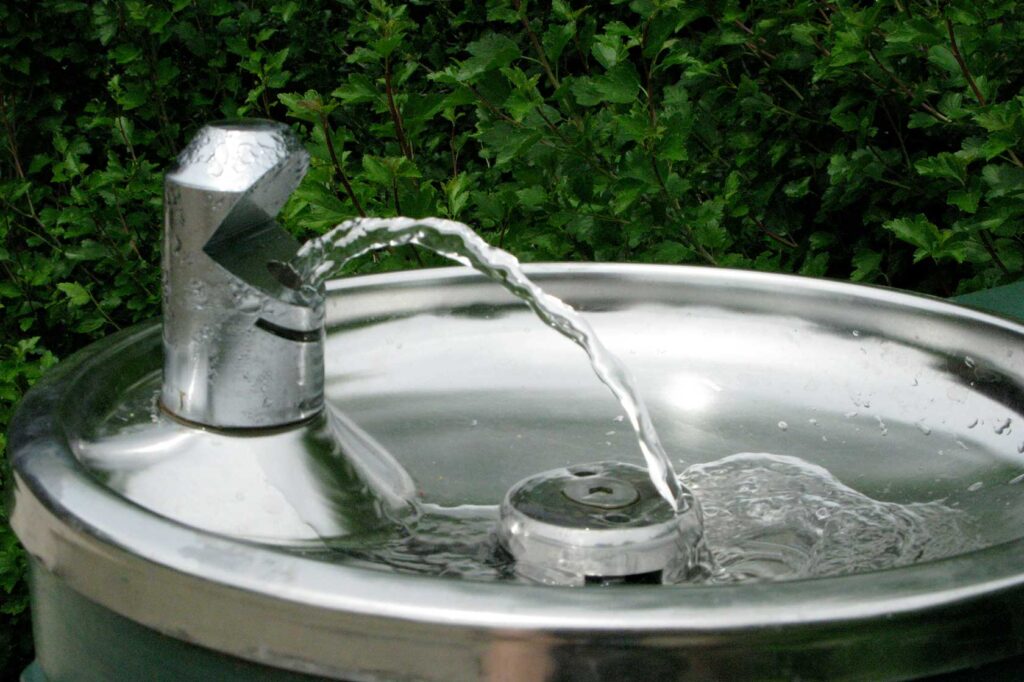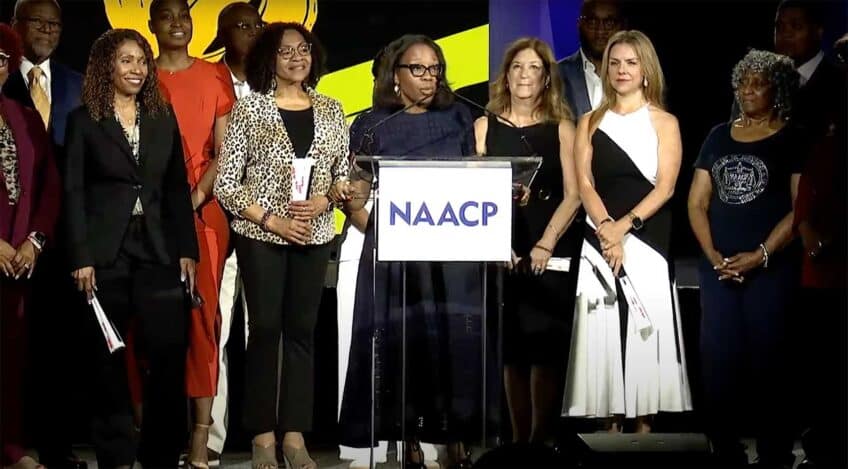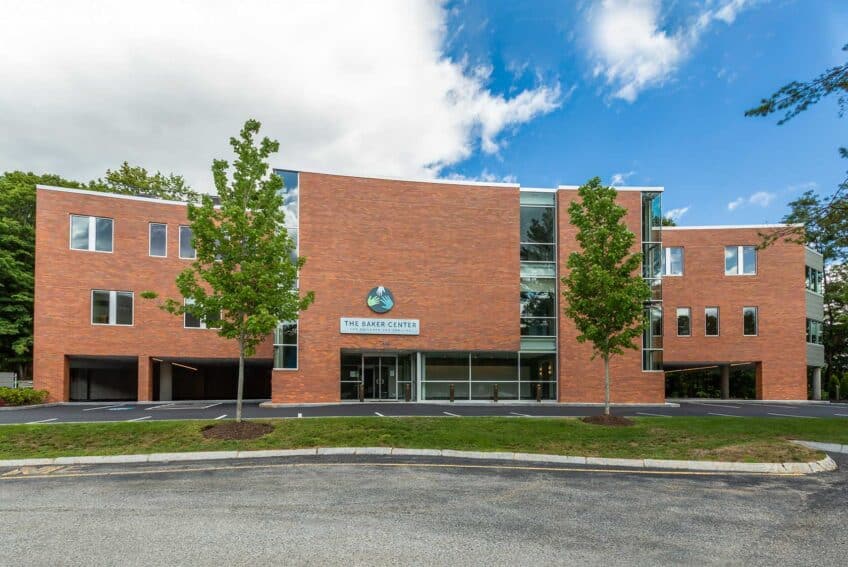
New funding from the federal government is aiming to reduce children’s exposure to lead in drinking water at schools and child care centers.
The nearly $1.3 million dollars being directed toward Massachusetts is part of a broader $26 million investment nationwide, announced by the Environmental Protection Agency last month.
“Kids should have access to healthy, safe water wherever they go to learn and play every day,” said John Rumpler, senior attorney at Environment America. “It’s vital for their health that kids drink water and stay hydrated. That water should be clean and safe when they’re at school or in child care.”
Advocates said pushing for efforts to address lead-contaminated drinking water in schools and child care centers is especially important for the health of kids, who are most impacted by tainted water.
Contamination in drinking water can be especially harmful to children’s development, affecting learning development, loss of IQ points and children’s behavior. It can also have long-term effects on high blood pressure, hearing loss and infertility.
“The last thing we should be doing in places where we, the public, take responsibility for our kids — where we say, ‘Sure, bring your kids to school’ — is adding to that toxic burden,” Rumpler said.
Currently, there are no federal regulations around drinking water in schools. The Environmental Protection Agency has the authority to regulate water authorities, but beyond that, specific guidance and rules are up to the states.
Regulations in Massachusetts currently largely focus on testing, but advocates are looking for more action replacing lead-based infrastructure.
Some efforts include replacing lead service lines — the pipes that connect a building’s water system to the water mains that run under streets — but where they are serving larger schools, those pipes are less likely to be made from lead. Service lines made from lead tend to be smaller, Rumpler said, with the larger capacity pipes, that bigger schools need, more often made from other metals.
Instead, Rumpler said he’d like to see more action around pipes and taps inside the buildings.
“The best solutions to the problem are to actually get to the root of the contamination, and that means they’re possibly removing lead-bearing parts that are the source of the lead contamination and, in all cases, installing filters that are certified to remove lead in every tap used for drinking water, cooking or beverage preparation in schools and child care centers,” he said.
What the new funding will specifically allow groups in the state to do still remains to be seen. Elizabeth Saunders, co-director at Clean Water Massachusetts, said that questions remain about the new funding, especially around how the funding will flow and what the impacts will be. She hopes it will help facilitate the replacement of old hardware and reduce the need for testing and technical assistance that can be a financial burden for schools and child care centers, especially those with many things to tackle with a limited budget.
“The funding for testing and technical assistance can really be a barrier in school systems or in day cares where there’s a very thin margin and where there’s a lot of competing priorities for resource allocation,” Saunders said.
The opportunities the funding is likely to bring is an important step, Rumpler said, but groups like Environment America would like to see broader change at a policy level, with state laws requiring the installation of filters and replacement of old fountains and faucets, and federal guidance from the EPA encouraging local water utilities to assist school districts in those replacements.
The lack of legislation requiring the replacement of taps and fountains in schools was one of the key reasons that Massachusetts scored a C- in a 2023 report from Environment America that looked across the country at how each state is reducing exposure to lead in schools.
Statewide legislation leading to the installation of new fountains, taps and filters would be the big change required to bring that grade up, said Rumpler, who worked on the report.
A Massachusetts program, called the School Water Improvement Grants or SWIG program, supports schools to install water bottle filling stations with filters. That program, which Rumpler called “fairly robust,” was one of the prominent reasons — alongside a Boston effort to replace lead service lines — that the state scored as high as a C-.
But the SWIG program, which launched in 2020, is voluntary, and could leave gaps in protections, Rumpler said.
“With more than 350 cities and towns across Massachusetts, we just can’t rely on the initiative of every single local school superintendent to understand the best policies to protect kids’ water,” he said. “We need a statewide policy.”
Proposed legislation in Massachusetts would have created a requirement that all schools and child care centers where testing identifies lead levels greater than 1 part per billion — picture one drop of water in a 10,000 gallon pool — from any faucet or fountain would have to install filters in all taps and replace all water fountains with filter-equipped bottle filling stations.
“Children spend a large portion of their days in school and child care facilities,” Saunders said. “[The law is significant] to really highlight that those facilities are important places to be thinking about this.”
That bill, introduced in February 2023, was reported favorably by the Joint Committee on Environment and Natural Resources but didn’t receive a floor vote in either chamber of the State House before the legislative session wrapped at the end of July. Rumpler said he expects it to be refiled.
In recent years, both Michigan and the District of Columbia passed regulations that require replacement of old fountains and installation of filters in schools.
The new federal funding is part of an ongoing effort from the Biden administration to reduce exposure to lead in drinking water. It follows $15 billion in funding, nationwide, through the Bipartisan Infrastructure Law, the $1.2 trillion infrastructure deal passed in 2021.
Previous funding has allowed for significant improvements in Massachusetts, Saunders said, pointing to the removal of lead service lines in Malden, a municipality she said had an outsized number of the old lead pipes, compared to its population. The cost of widespread pipe replacement has prevented much progress, Saunders said.
“It is a significant cost burden for any city or town to take on. Malden is an example where federal funds have helped move that forward,” she said of the effort, which used funding from the Bipartisan Infrastructure Act. “That’s helping to close a really important gap.”
And other changes at the federal level might be coming to address lead in drinking water.
The EPA is expected to adopt updated guidelines around lead that would create a 10-year deadline to remove all lead service lines nationwide. Those regulations could be adopted as soon as mid-October.
But, due to the limited presence of lead service lines in larger schools, Rumpler said he still sees a gap in federal regulations around protections in schools, something he’d like to see the EPA address.
“While we acknowledge that the EPA cannot directly regulate schools, the EPA can say to water utilities that part of what they’re going to require water utilities to do under the Safe Drinking Water Act is offer to replace water fountains with new water bottle filling stations that have filters certified to remove lead filters on other taps used for cooking and drinking,” Rumpler said.






